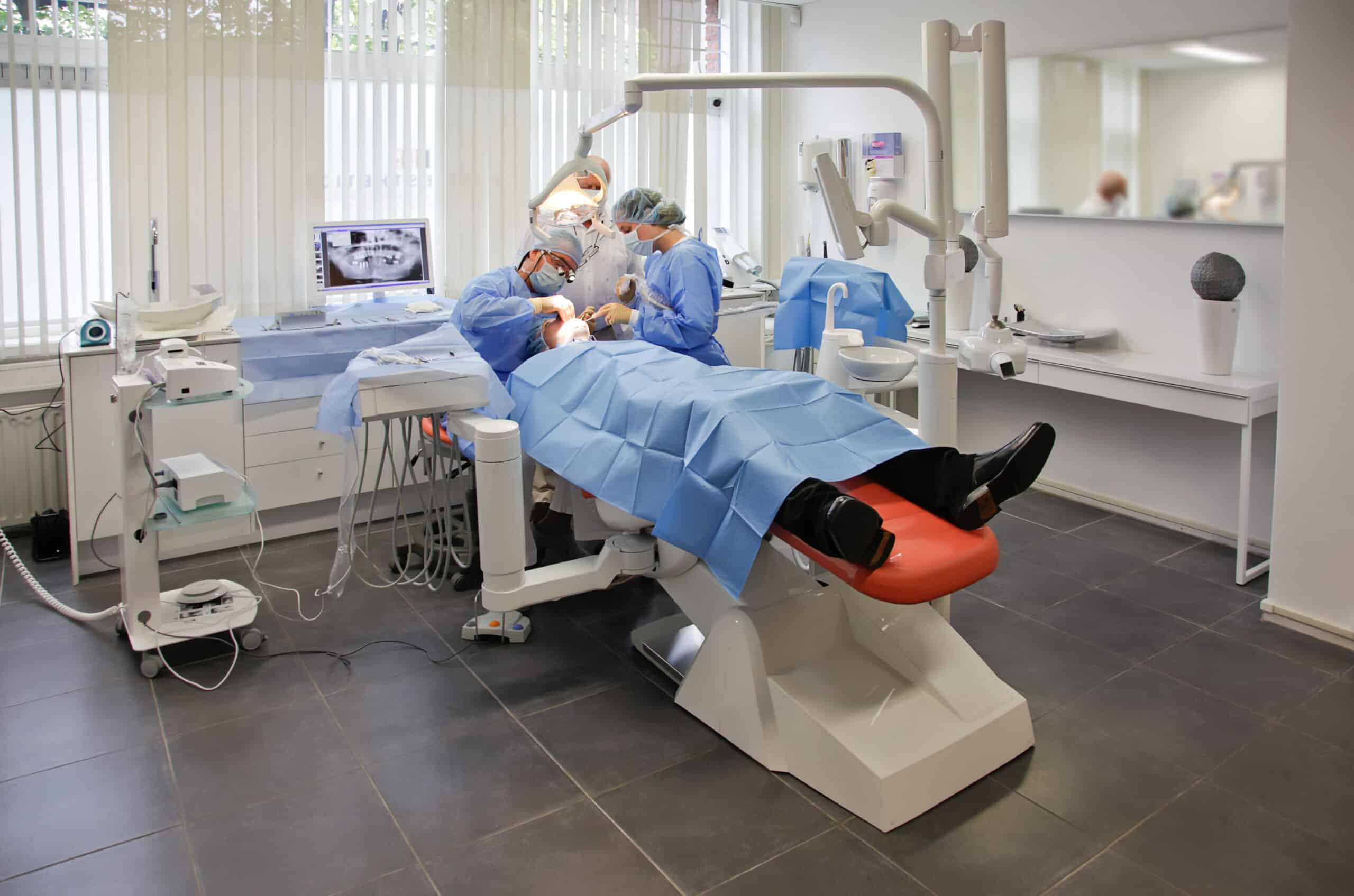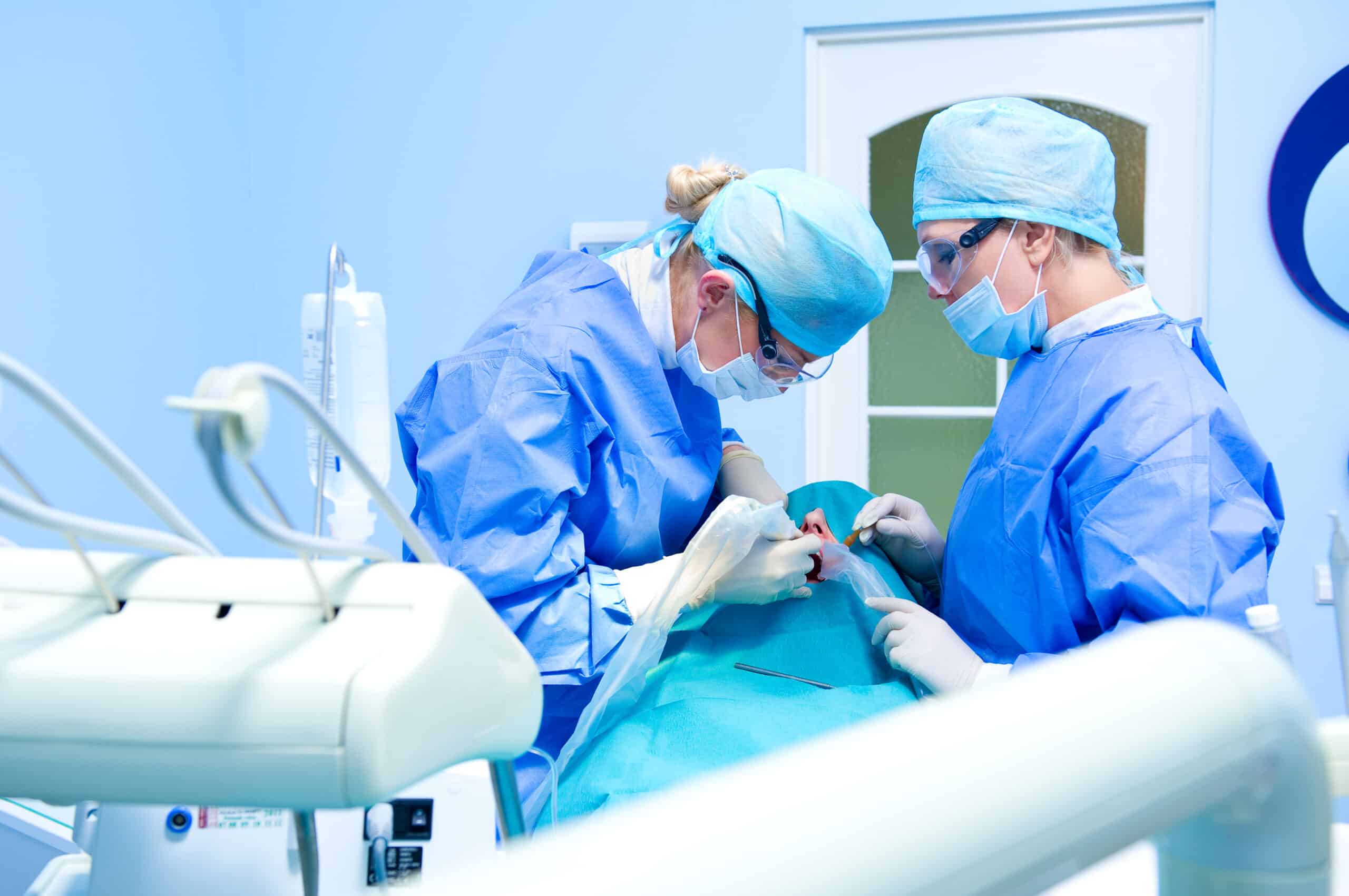Impacted teeth, also known as retained or impacted teeth, are those teeth that have not erupted during the usual period.
They remain inside the maxillary bone – partially or completely – despite having been fully formed.
In this article we will explain in detail how to treat this problem, as well as explaining its causes and consequences.
Which teeth can remain included?
The truth is that it can happen indistinctly with the milk teeth or with the definitive teeth and in any tooth.
However, the process of inclusion is more common in wisdom teeth and upper canines.
This is because these are the last teeth to emerge and tend not to have enough space to erupt.
It is a problem that occurs quite frequently, especially in the population over 15 years of age.
The consequences of an impacted tooth can be very serious, which is why early detection is essential.
For the diagnosis of these impacted teeth, a panoramic X-ray of the mouth is performed to help rule out pathologies and to determine the causes of the delay in eruption.
Canine with total inclusion
Enlarge image
RADIOGRAPHY
Classification of impacted teeth
There are two types of tooth inclusions:
Total inclusion: this is the case of those teeth that have remained completely inside the bone and have not emerged the least bit through the gingiva.
Partial inclusion: semi-included or semi-impacted teeth are those that have partially erupted into the mouth and, given their position, are more vulnerable to accumulate bacteria and tartar.
This is why they can suffer from recurrent infections.
Unlike impacted teeth, it is easy to detect when a tooth partially erupts because of its symptoms:
Bad breath
Inflammation
Pain or tenderness in the gums
Prolonged headache or jaw pain
Reddening of the gums around the impacted tooth
Unpleasant taste in the mouth
Visible space where the tooth should have erupted
It is common to extract the wisdom teeth included, as they usually present many eruption problems that lead to negative consequences for the rest of the teeth.
Causes and complications of impacted teeth
Although not in all cases there is a clear factor that has led to an impacted tooth, some of the most common causes of this process are the following:
Infections
Trauma
Genetics
Lack of space in the mouth
Malnutrition
As for the consequences of dental inclusions, they can be numerous and some of them very serious.
The retained tooth becomes malpositioned and, as a result, impacts against neighboring teeth.
Impacted canine
Enlarge image
IMPACTED CANINE
This in turn leads to various complications:
Root resorption
Damage to the anatomical structure (maxillary sinus, nerve trunks, roots of adjacent teeth, etc.).
Infections
Alterations in the rest of the teeth (can cause crowding).
Appearance of periodontal pockets
Chewing problems
Caries formation due to plaque accumulated between the teeth and gums.
Development of cysts or tumors
Chronic discomfort in the mouth
Malocclusion
How to treat impacted teeth
There are three treatments to correct these teeth:
Limit yourself to monitoring their evolution
We will only act in this way when there is no risk of pathology.
In practically all cases, the other two treatments are used.
Extraction of the tooth
Although it would be the last resort in the case of an impacted canine -unless there is a serious problem-, it is quite common to perform an extraction in the case of wisdom teeth.
Repositioning the tooth
When the tooth in question is functionally and/or esthetically important – as is the case with canines – the dental professional will opt to reposition it where it should have erupted.
WE CAN HELP YOU RECOVER YOUR SMILE
Wisdom teeth extraction surgery including
As we have already mentioned, the extraction of wisdom teeth is common because problems with the eruption of these teeth are very common.
This is because the number of teeth has been maintained throughout the evolution of the human species, but the size of the jaw has been decreasing.
This is why, on many occasions, wisdom teeth do not find enough space to emerge and end up retained in the maxilla.
Wisdom tooth included
Enlarge image
RETAINED WISDOM TOOTH
And given their little practical functionality, the most advisable thing to do is to extract them to avoid possible complications (infections, movement of the rest of the teeth…).
However, if the wisdom teeth grow correctly and do not compromise the structure of the rest of the teeth, they can be kept.
Exodontia of wisdom teeth is a very frequent surgery and it is advisable to perform it before the root develops (before the patient turns 20 years old, approximately).
A fully developed root has contact with the nerve, one of the parts into which the tooth is divided, and there will be more risk during extraction.
Exodontia is performed under local anesthesia.
Detect the problem as soon as possible
It is recommended that you visit your dentist regularly so that he/she can check if you have any included teeth, even if you have not noticed it.
If the inclusion of the wisdom tooth is total, it will be necessary to make a cut in the gum to access it.
As a general rule, the postoperative period does not involve more than swelling that will reduce in two or three days.
The patient should follow a soft diet and hygiene according to the instructions given by the dentist.
Traction-based repositioning of the impacted canines
After the wisdom teeth, the canines -also called fangs- are the teeth that present the most eruption problems.
Unlike the wisdom teeth, these teeth have an important functional and esthetic role in the jaw.
They actively participate in the chewing process and help the patient’s smile to be harmonious, as they are very visible teeth.
It is possible that the canine does not emerge due to lack of space in the mouth or also because its position in the maxillary bone is not correct.
If the location of the canine is favorable, the most recommended treatment is to reposition it in the dental arch by means of a combined intervention between the maxillofacial surgeon and the orthodontist.
Retained canine
This surgery is called fenestration.
The surgeon makes a small incision in the place where the retained canine is and the orthodontist places a bracket or support to help in the traction of the tooth.
This procedure is also performed under local anesthesia and lasts between 20 and 25 minutes.
The postoperative period involves slight edema and requires a soft diet for two or three days, after which the patient can begin orthodontic treatment to help align the canine along with the rest of the arch.
Due to the serious consequences that can result from an impacted or retained tooth, it is necessary to choose professionals with extensive experience in the field, who will choose the best treatment.
You will be interested in ” Curiosities about animal and human teeth
At DrAW Dental Clinic we are guided by editorial guidelines that ensure the veracity of all the information we publish. If you want to know more about how we ensure that our content is updated and properly supported, we encourage you to read our editorial commitment.



